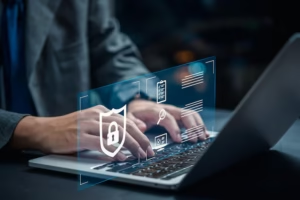Introduction
Cybersecurity threats are real and growing. Every business, big or small, faces risks that can disrupt operations, expose sensitive data, and damage reputation. Today, understanding these threats is not optional—it’s critical. This guide covers the most pressing cybersecurity threats and how businesses can protect themselves.
1. Phishing Attacks
Phishing is one of the oldest and most common forms of cyberattacks. It involves tricking employees into revealing sensitive information like passwords, credit card numbers, or login credentials.
How It Works:
- Attackers send emails that look legitimate.
- These emails include links or attachments designed to steal information.
- Clicking the wrong link can compromise entire systems.
How to Protect Your Business:
- Educate employees on how to spot suspicious emails.
- Use email filters and spam detection tools.
- Implement multi-factor authentication (MFA).
2. Ransomware
Ransomware encrypts a business’s files and demands payment to unlock them. It can halt operations, cause data loss, and cost companies thousands—if not millions.
Common Entry Points:
- Phishing emails
- Unpatched software vulnerabilities
- Infected downloads
Prevention Tips:
- Regularly update all software and systems.
- Maintain daily backups of important data.
- Use endpoint protection and anti-ransomware tools.
3. Insider Threats
Not all threats come from outside. Sometimes employees—whether intentionally or accidentally—can cause security breaches.
Examples Include:
- Unauthorized data sharing
- Poor password practices
- Falling for phishing scams
Minimize Insider Risk:
- Limit access based on role (least privilege principle).
- Monitor user activity for unusual behavior.
- Conduct regular cybersecurity training.
4. Malware
Malware refers to malicious software designed to damage or gain unauthorized access to systems. It includes viruses, worms, spyware, and more.
Signs of Infection:
- System slowdowns
- Unexpected pop-ups
- Data disappearing or being altered
Defense Strategies:
- Install antivirus and anti-malware tools.
- Regularly scan systems.
- Avoid untrusted downloads and websites.
5. DDoS Attacks
Distributed Denial of Service (DDoS) attacks overwhelm your website or network with traffic, making it unavailable to users. These are often used to disrupt services or as a distraction for other attacks.
How It Impacts You:
- Website downtime
- Lost revenue
- Customer dissatisfaction
How to Prepare:
- Use a content delivery network (CDN).
- Implement traffic filtering tools.
- Monitor traffic spikes closely.
6. Unpatched Software and Systems
Failing to update software leaves your business open to known vulnerabilities.
Common Risks:
- Exploits of known bugs
- Unauthorized access
- System crashes or failures
Solution:
- Schedule regular updates.
- Enable auto-updates where possible.
- Track all software and hardware assets.
7. Social Engineering
Social engineering exploits human behavior. Attackers trick people into giving away information or performing actions that compromise security.
Real-world Examples:
- Pretending to be IT staff asking for credentials
- Manipulating customer service agents
Prevention:
- Train employees to question unusual requests.
- Implement strict identity verification processes.
How Cloudnetic Helps
At Cloudnetic, we specialize in preventing these threats before they happen. Our cybersecurity solutions include:
- Vulnerability assessments
- Endpoint protection
- Data backup and disaster recovery
- Continuous threat monitoring
- User access management
Our experts work closely with you to understand your risk profile and deploy defenses that work.
Conclusion
Cybersecurity threats are increasing in number and sophistication. But with the right knowledge and proactive steps, you can protect your business. Education, preparation, and the right partner make all the difference.
Let Cloudnetic help you build a stronger, safer digital future.






